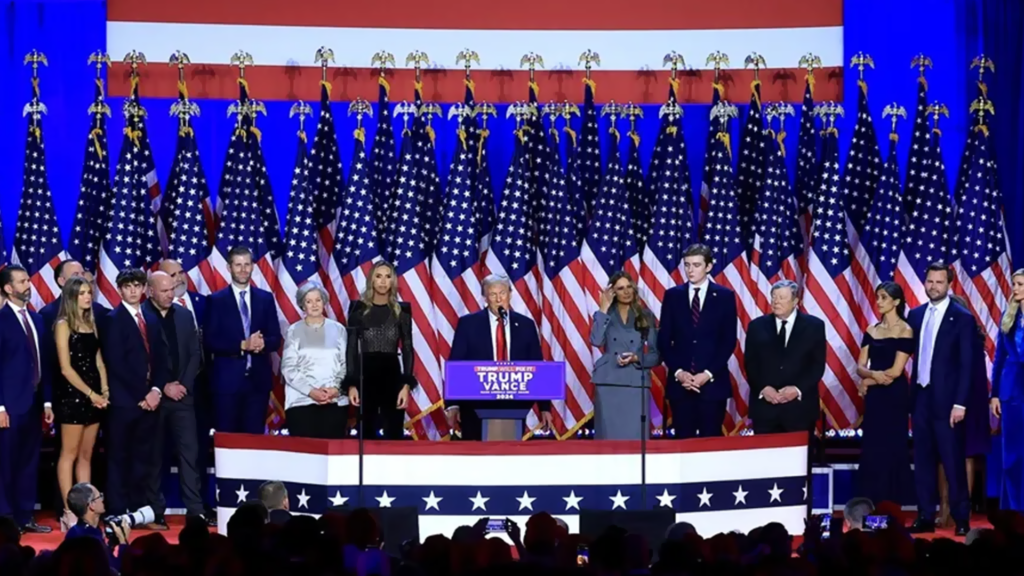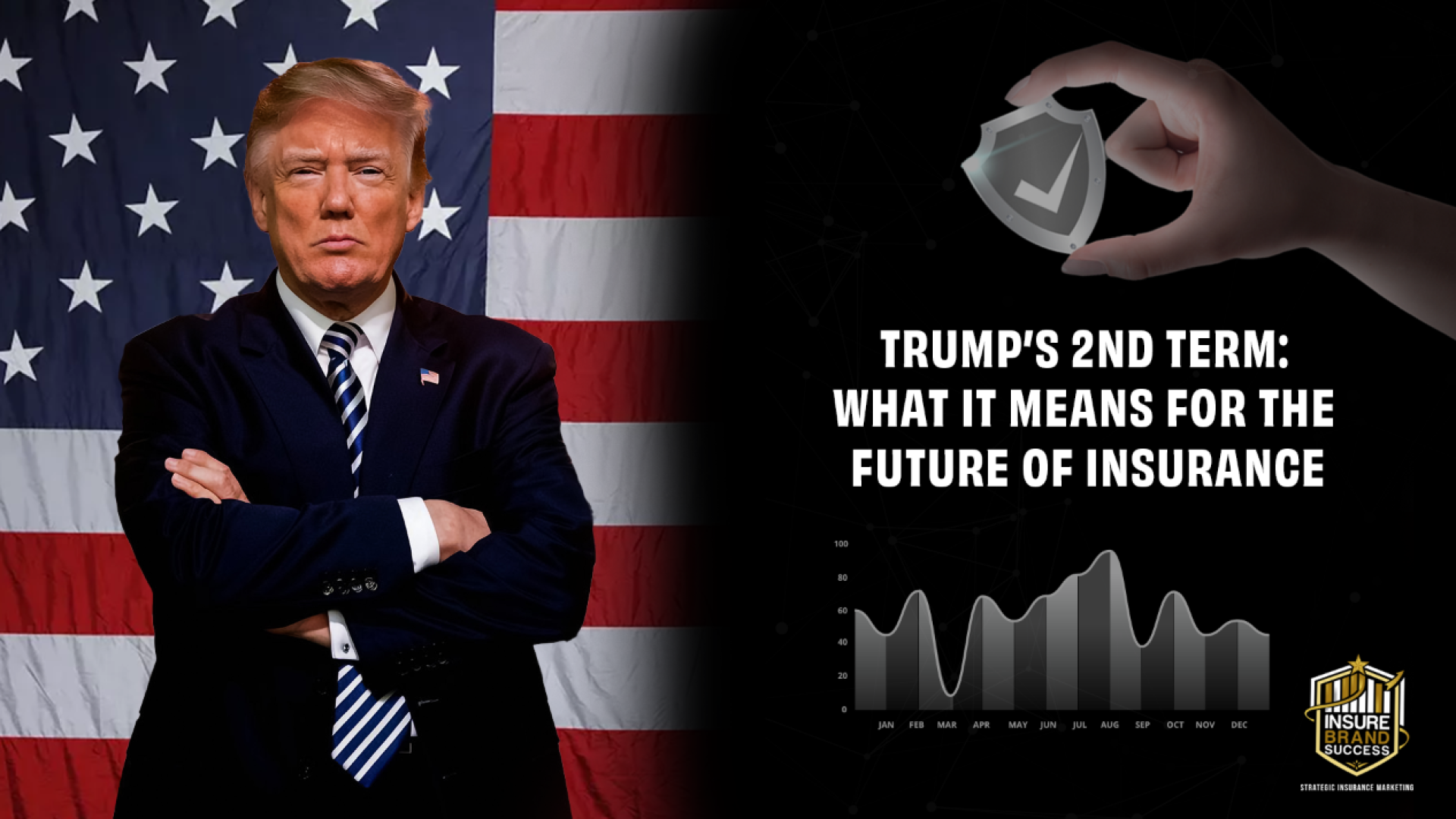How Trump’s Second Term Could Transform the Insurance Industry
With Donald Trump back in the White House, the landscape for the insurance industry is poised for significant shifts. From economic policies to regulatory changes, the potential impacts on insurance agencies could be substantial. In this article, we’ll break down the key areas of change and offer insights into what they could mean for insurers, clients, and the industry as a whole.
Let’s dive into the areas to watch as Trump’s policies unfold.
1. Tariffs and Inflation: Higher Premiums and Potential New Risks
One of the key components of Trump’s economic strategy is tariffs. He’s proposed a 10% tariff on all imports and a steep 60% tariff on Chinese goods. While these tariffs aim to protect U.S. industries, they’re likely to push consumer prices higher and increase inflation.
Impact on Insurance Premiums
Higher consumer prices and inflation could drive up the cost of claims, especially for property, auto, health, and casualty insurance. As the cost of materials, goods, and services rises, insurers may find that their claims payouts are also impacted. This can lead to a need for adjusted pricing models, ultimately increasing premiums across several policy types.
Business Interruption and Supply Chain Insurance
Increased tariffs could create supply chain disruptions, affecting various industries that rely heavily on imports. Businesses may face operational interruptions, raising the demand for business interruption and trade credit insurance. Insurers can seize this opportunity by offering products specifically designed to mitigate the risks associated with tariff-related disruptions.
Insight: With higher costs likely to affect multiple sectors, insurers should closely monitor claims trends and consider adjusting premiums to maintain profitability.
2. Regulatory Deregulation: More Flexibility for Insurers, New Product Opportunities
Trump’s administration is expected to push for deregulation in sectors like technology, energy, and healthcare. A lighter regulatory framework could allow insurers to offer a wider range of products, especially in emerging fields such as autonomous vehicles, space exploration, and digital assets.
Potential for Innovation
Deregulation may reduce compliance burdens, enabling insurers to explore and create policies for new and previously underserved markets. For example, autonomous vehicles and space tourism could see increased activity under deregulated policies, allowing insurers to develop specialized coverage for these cutting-edge sectors.
Health Insurance Adaptations
If public health policy undergoes significant changes—such as shifts in vaccine recommendations or healthcare options—health insurance providers may need to offer alternative coverage options. This could include policies that cover natural immunity testing or non-traditional health screenings, adapting to new client demands.
Insight: Deregulation can be a double-edged sword, providing opportunities for innovation but also requiring insurers to be vigilant in monitoring regulatory changes that may impact risk profiles and coverage needs.
3. Geopolitical Tensions and Cybersecurity: Rising Demand for Cyber and Political Risk Insurance
Trump’s second term is likely to be marked by heightened geopolitical tensions, particularly with China. This shift, combined with deregulation in tech, will increase cyber risks and political uncertainty for U.S. businesses operating globally.
Cybersecurity Threats
As regulations on data privacy potentially ease, companies may become more vulnerable to cyberattacks, heightening the demand for cybersecurity insurance. With deregulation in tech, companies could be more exposed to cyber threats, and insurers specializing in cybersecurity coverage are likely to see an uptick in demand.
Political Risk Insurance
U.S.-China tensions may lead to an increase in demand for political risk insurance. Companies with global supply chains or operations in politically unstable regions will seek coverage that can protect them against unexpected disruptions or sanctions.
Insight: Insurance agencies offering cyber and political risk coverage will be better positioned to serve companies seeking to protect themselves from rising global tensions and digital threats.

4. Energy Policy Shifts: Increased Fossil Fuels, Reduced Renewable Focus
Trump’s pro-oil and gas stance includes lifting restrictions on natural gas exports, opening federal lands for drilling, and potentially reducing subsidies for renewable energy. These moves could create a demand shift within the insurance market.
Environmental Liability Insurance
Increased fossil fuel production means a higher likelihood of environmental incidents, driving demand for pollution and environmental liability insurance. As more projects in oil and gas are greenlit, companies will seek coverage against risks related to spills, contamination, and emissions.
Impact on Renewable Energy Insurance
The renewable energy sector, which relies heavily on imported components like Chinese-made solar panels, could face challenges if tariffs are imposed. Higher costs for renewable projects could slow their expansion, potentially reducing demand for insurance products that cater to green energy projects.
Insight: Insurers may need to rebalance their portfolios, with a renewed focus on fossil fuel risks while being prepared for shifts in demand from the renewable energy sector.
5. Labor Market Policies: Potential Impact on Workers’ Compensation and the Gig Economy
Trump’s policies toward labor could lead to reduced union power and more flexible labor standards, impacting workplace safety and insurance needs for gig workers.
Workers’ Compensation
With less influence from unions, workplace safety regulations could loosen, potentially leading to an increase in workplace accidents. This might drive up demand for workers’ compensation insurance, especially in sectors like manufacturing and construction where labor standards are crucial.
Gig Economy Insurance Needs
Policies that favor independent contractors could expand the gig economy, creating a market for individual health, life, and disability insurance. Gig workers, who lack employer-sponsored benefits, may seek individual policies to protect themselves.
Insight: Agencies offering workers' compensation or individual policies for gig workers will find themselves well-positioned to meet the needs of this evolving workforce.
6. Healthcare and Pharmaceuticals: Tariffs and Public Health Shifts
With tariffs on pharmaceutical imports and potential changes in public health policy, healthcare costs could rise, affecting health insurance premiums.
Rising Healthcare Costs
Higher tariffs on pharmaceuticals and healthcare equipment will likely drive up costs, leading to more expensive healthcare overall. Health insurers may see claim costs rise, requiring adjustments to premiums to offset these higher expenses.
Vaccine Policy Adjustments
If RFK Jr. influences vaccine policy, this could reshape public health guidelines and alter public demand for certain health coverages. Insurers may need to develop policies that reflect alternative healthcare strategies or provide more flexible health options.
Insight: Insurers should prepare for possible fluctuations in health insurance demand and be ready to adapt to shifts in healthcare cost structures and public sentiment around vaccines.
7. Financial and Tax Policy Changes: Impact on Property and Casualty Insurance
Tariff-driven inflation may lead to higher interest rates, affecting loans, mortgages, and the overall cost of property and casualty insurance.
Rising Interest Rates and Insurance Affordability
Higher interest rates could make borrowing more expensive, impacting affordability for property and casualty insurance. For example, people financing assets like homes or cars may face higher premiums, potentially leading to a drop in new policy sales.
Growth in Commercial Insurance
On the other hand, reduced banking regulations may increase access to credit for small businesses. As businesses grow and expand, they will require commercial insurance policies to protect their assets, creating an opportunity for insurers.
Insight: By monitoring interest rate trends and adapting pricing strategies, insurers can navigate these economic pressures while capturing new business from expanding commercial clients.
8. Crypto and Fintech Policies: New Opportunities and Increased Volatility
Trump’s alignment with cryptocurrency advocates could mean reduced SEC oversight on digital assets, creating a potential boom in the crypto market.
Crypto Insurance Demand
With looser regulations, the need for crypto insurance products covering fraud, cybersecurity, and volatility could rise. Businesses involved in crypto will seek protection as the sector grows more mainstream and valuable.
Increased Market Volatility
Less regulatory control over crypto could lead to heightened market fluctuations, requiring insurers to carefully assess premiums and exposure in this volatile space.
Insight: Insurers focusing on crypto-related policies can meet the growing demand from businesses and individuals involved in digital finance, while also managing risk effectively.
9. Media and Reputational Risk Coverage: Heightened Liability in a Politicized Environment
With Trump’s potential influence over media regulation, media outlets may face new legal challenges, creating demand for media liability and reputational risk insurance.
Media Liability Insurance
As the regulatory environment around media tightens, outlets may seek liability coverage to protect against potential legal disputes or government actions.
Reputational Risk Insurance
Media companies and tech firms may require reputational risk insurance to safeguard against negative public perception and regulatory scrutiny, particularly in a politicized landscape.
Insight: Insurers can offer products that address the evolving risks faced by media and tech companies, tapping into a growing need for reputational protection.
10. Climate and Environmental Considerations: Higher Risk, Higher Claims
While Trump’s administration is expected to reduce federal climate regulations, extreme weather events are on the rise, posing risks for insurers.
Increased Property Damage Claims
With fewer climate policies in place, infrastructure may become less resilient, leading to more damage from hurricanes, wildfires, and floods. Property insurers will need to adjust their pricing models to account for these heightened risks.
Focus on Resilience
Insurers might consider offering policies that encourage resilient infrastructure investments, helping clients reduce their exposure to climate risks.
Insight: Agencies that prioritize climate-resilient policies and risk mitigation strategies can protect their clients while managing claims costs.
Note: This article is written by the InsureBrandSuccess staff and is intended solely to provide insights into potential industry impacts. InsureBrandSuccess maintains a neutral stance with no political affiliation. Our analysis uses various sources to support our mission of delivering valuable marketing insights and strategies for our clients in the insurance industry.Resources
- The New York Times: How Tariffs Are Affecting the U.S. Economy
- Tax Foundation: Economic Impact of Trade Tariffs
- Wall Street Journal: Trump’s Deregulation Agenda
- Forbes: Deregulation Driving Tech Innovation
- BBC: Geopolitical Tensions and Cybersecurity Threats
- Harvard Business Review: Rise of Cyber Risk Insurance
- Washington Post: Shifts in Public Health and Vaccine Policies
- Reuters: Environmental Policy Changes and Climate Risks
- Bloomberg: Trump’s Tariff Strategy and Inflation
- National Retail Federation: Tariff Impact on Consumer Spending
Embracing Change with InsureBrandSuccess
Trump’s second administration brings a wave of change that could impact nearly every facet of the insurance industry. While these shifts present challenges, they also offer opportunities for agencies ready to adapt.
At InsureBrandSuccess, we’re here to support insurance agencies in navigating these changes, offering strategic guidance, marketing support, and insights to help you thrive in a complex landscape. By staying informed and prepared, your agency can not only survive but thrive amid industry transformation.
Looking for expert advice on how to adapt your agency? Contact us today to discuss your strategy for success.




